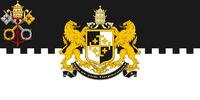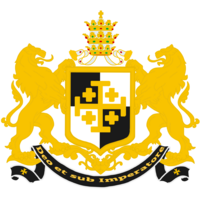Francisco Sánchez Vizcarra: Difference between revisions
No edit summary |
No edit summary |
||
| Line 13: | Line 13: | ||
|predecessor = | |predecessor = | ||
|successor = | |successor = | ||
|order1 = | |order1 = 3 | ||
|office1 = [[National Coffee and Sugar Corporation#List of CORNACA CEOs|CEO]] of [[National Coffee and Sugar Corporation|CORNACA]] | |office1 = [[National Coffee and Sugar Corporation#List of CORNACA CEOs|CEO]] of [[National Coffee and Sugar Corporation|CORNACA]] | ||
|predecessor1 = | |predecessor1 = | ||
Revision as of 01:32, 23 February 2020
This article is incomplete because it is pending further input from participants, or it is a work-in-progress by one author. Please comment on this article's talk page to share your input, comments and questions. Note: To contribute to this article, you may need to seek help from the author(s) of this page. |
Francisco Sánchez Vizcarra | |
|---|---|
| File:Francisco "Chico" Sánchez.jpg Francisco Sánchez Vizcarra in 1938 with Creeperian Army officers inspecting a CORNACA sugar field during the Creeperian Civil War. | |
| 3 [[CEO of CORNACA]] | |
| In office March 15, 1927 – June 13, 1944 | |
| Personal details | |
| Born | Francisco Chico Sánchez Vizcarra June 2, 1884 La'Unión, La'Unión, Creeperopolis |
| Died | June 13, 1944 (aged 60) Juayúa, Jakiz, Creeperopolis |
| Citizenship | |
| Political party | National Conservative Party |
Francisco Chico Sánchez Vizcarra (June 2, 1884-June 13, 1944) was a Creeperian businessman and the CEO of the National Coffee and Sugar Corporation from 1927 until his death in 1944. During his life, he was known to be a great philanthropist and donated much of his wealth to the people of Creeperopolis.
Early Life
Francisco Chico Sánchez Vizcarra was born in La'Unión, La'Unión on June 2, 1884 to a wealthy upperclass family.
CORNACA
CEO
Personal Life
Execution
ON June 13, 1944, the Militarist Nationalist Front entered the city of Denshire, where Sánchez Vizcarra was at the time, and massacred 25,000 Deltinian civilians.
During the massacre, some Creeperian civilians attempted to shelter and protect Deltinians rightfully fearing for their lives. Deltinians were taken into homes and hidden behind bookshelves, under beds, in attics, in basements, and on rooftops. Many civilians attempted to assist the Deltinians. At first, civilians who hid and sheltered Deltinians were released free, but as the massacre progessed and more and more Deltinians were found hiding in homes, a no-quarter was initaited where all people caught hiding Deltinians were to be burned alive in their homes.

The most infamous case of a Creeperian civilian sheltering and protecting Deltinan civilians is of Francisco Sánchez Vizcarra. Sánchez Vizcarra was a wealthy businessman and the then CEO of the National Coffee and Sugar Corporation. Sánchez Vizcarra had a second mansion in Denshire which he purchased before the outbreak of the Creeperian Civil War. When civil war errupted, he was forced to essentially abandon his mansion in Denshire as it fell under the control of the National Council for Peace and Order. When Denshire was liberated in 1943 by the Imperial Council, he returned to rebuild the mansion and cater to the civilians of the city with his vast amounts of wealth. Sánchez Vizcarra was loved by the people of Denshire, and when the massacre began, many Deltinians flocked to his mansion in hopes of surviving. He hid a total of 132 Deltinians in his mansion during the massacre. However, he was caught by the soldiers of Sombra Negra and condemend to die in the fire of his mansion along with the 132 Deltinians hiding inside. He attempted to bribe the soldiers $245 million dollars[a][b] to spare him and the 132 Deltinians. The soldiers refused the bribe. Instead, he bribed the soldiers the same amount to take him and the prisoners outside of Denshire and to the nearby village of Juayúa to be executed there and be properly buried instead of being burned alive or have thier bodies left in the steets. The soldiers agreed and Francisco Sánchez Vizcarra and the 132 Deltinians were executed and buried in the village of Juayúa. His mansion was subsequently looted by the Sombra Negra.
Notes
- ↑ The Catholic Imperial Restoration Council used the Creeperian Dollar. The Creeperian Dollar itself was in circulation from 1814 up until 2003 when it was replaced with the currenly circulating Creeperian Colón.
- ↑ The attempted bribe of $245 million Creeperian Dollars is worth a total of $1.3 billion Creeperian Colóns in 2020.

